VICE partnered with Fotografiska New York to present New Visions, an exhibition showcasing 14 emerging photographers from around the world who are changing the way we see. To highlight the work beyond the museum, we asked 14 of our favorite, fresh voices in culture to respond to the photos in writing. Here, music journalist Taylor Crumpton engages photographer Sasha Phyars-Burgess about the concepts behind her work. Read more from the New Visions series here, and learn more about the show at Fotografiska New York here.
The placement of his hands on the upper corner of her thigh, the widening of hips to accentuate her flow, the adornment of furs and velvets to caress the breasts of her body, and the focal point of the event in motion: the dance circle. It’s formation is a sacred moment, a utopian escape from the social and political stressors of the world and the exploitation of our bodies for the accumulation of the capital. In this moment, I am removed. I am liberated. I am free.
In his canonical 1963 book, The Wretched of the Earth, Frantz Fanon writes:
“The circle of the dance is a permissive circle: it protects and permits. At certain times on certain days, men and women come together at a given place, and there, under the solemn eye of the tribe, fling themselves into a seemingly unorganized pantomime, which is in reality extremely systematic, in which by various means—shakes of the head, bending of the spinal column, throwing of the whole body backward—may be deciphered as in an open book the huge effort of a community to exorcise itself, to liberate itself, to explain itself. There are no limits—inside the circle.”
Trinidadian-American photographer Sasha Phyars-Burgess was inspired by that passage when she made the series UNTITLED OR AGAIN AND AGAIN AND AGAIN, which documents the phenomenon of the dance circle among Black students at overwhelmingly-white Cornell University. I spoke to her recently about her interest in exploring the relationship between Black club spaces and the social and political factors that contributed to their formation.
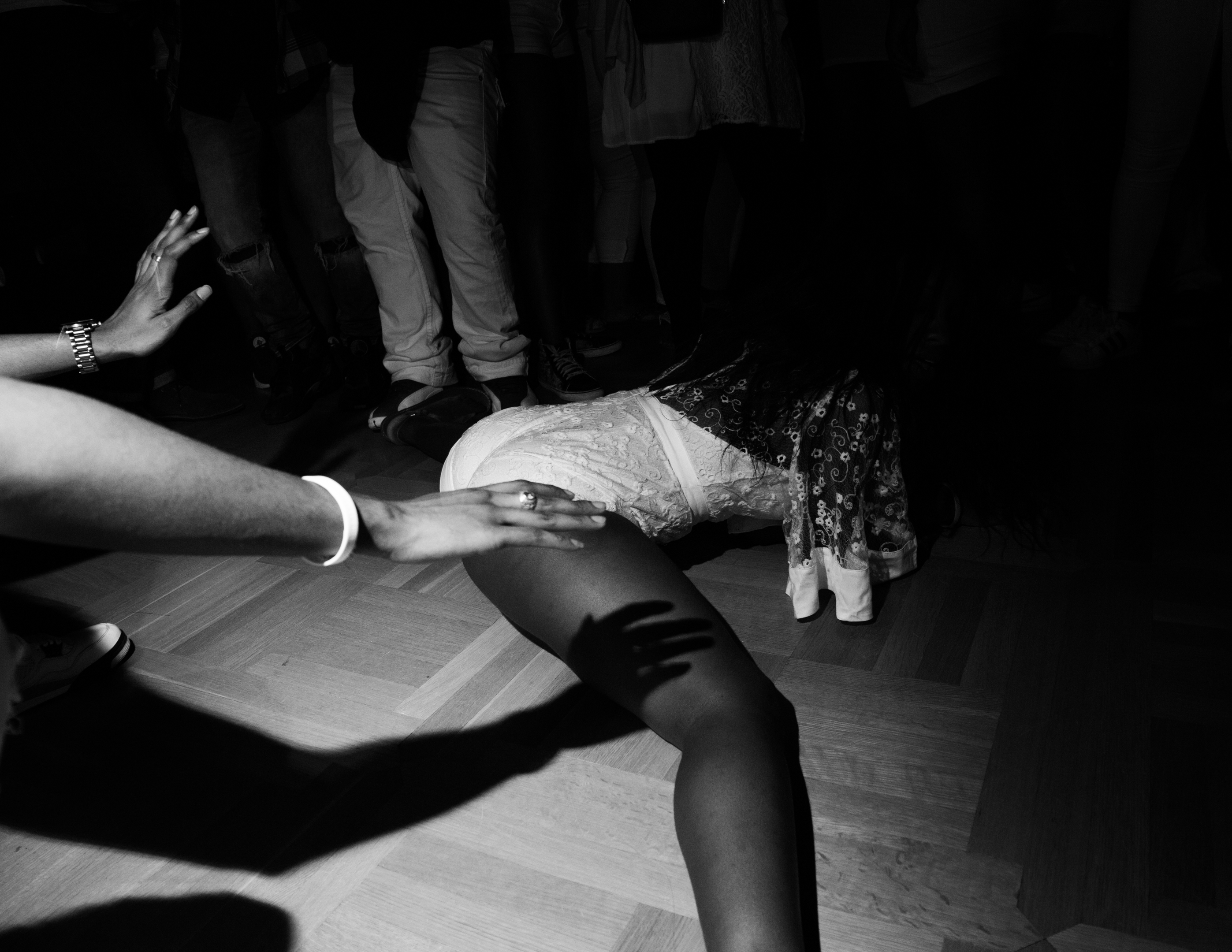
Taylor Crumpton: What led you to ground your project in an excerpt from Frantz Fanon?
Sasha Phyars-Burgess: In undergrad, my friends—a collection of Latinx, Asian, and Black people from all over the world —lived for the weekend. One of my friends repeatedly pointed out the quote and equated that [with what] would happen to us over the weekend. We entered into a space of full release, full expression of our bodies that were contradictions; choreographed yet un-choreographed, staged but un-staged. In the writing, it was described as a synchronized method of movement. However, it was also protection from others who were unwanted and unwelcome, being that men or white people. It was about us in those moments.
Dancing with your friends is personal and public at the same time. The body’s duality to exist in two unique spaces is fascinating, especially when it has to adjust to dancing alone or in another region. For example, when I left the South and was exposed to the dancing styles of Philadelphia and Oakland, my body didn’t know how to react. One night, I bent over to twerk, and ended up being yiked on (past tense for yiking).
I’m not from Chicago (where Phyars-Burgess is based at), so it’s interesting to see the way that they dance. It’s called "juking," and it reminds me of how people in New Orleans dance, but it's definitely different. On the East Coast, the ways people dance in New York City versus Baltimore versus Philadelphia is tied to the specificities of the regions. Yet in that moment, there’s a common denominator of understanding dance.
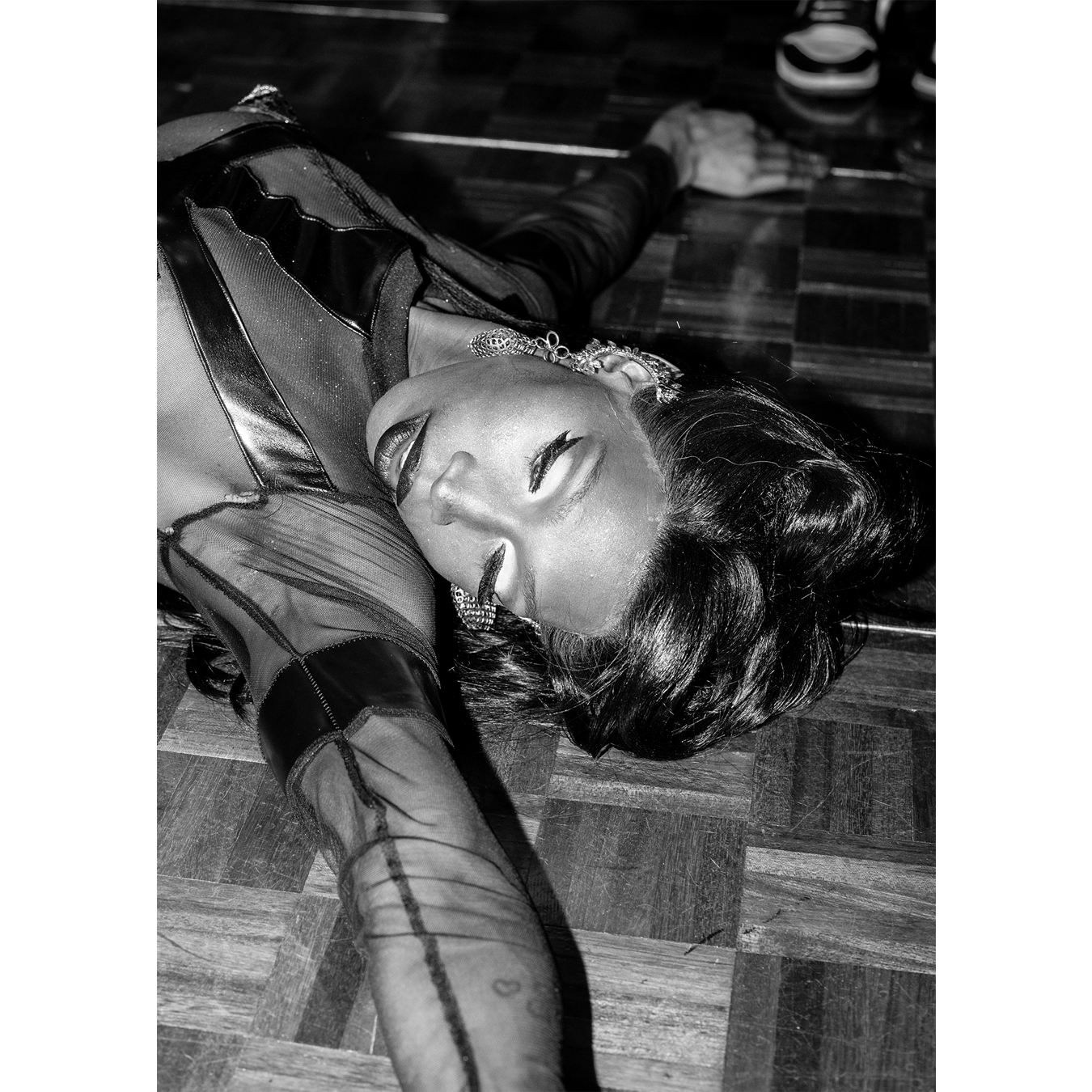
You’ve mentioned Philadelphia and New York City. Did you center those Black cities in the series or incorporate others as well?
There’s a few photographs that were taken at a ball in Philadelphia, and there’s a few photographs that were taken at Ragga NYC, a queer dance party for people of the Caribbean diaspora, but the majority of these photographs were taken at Cornell University when I was a graduate student. When I arrived at the predominantly white campus, I asked, “Where are all the Black people at?” [As an] undergraduate, I remembered my experience of Friday nights, the only opportunity where students congregated, dressed, danced, and listened to music out of the encroachment of eyes that might not understand.
The photo series idea emerged from my experience at Cornell, so I contacted the university’s chapter of Alpha Phi Alpha Fraternity, Incorporated and Alpha Kappa Alpha Sorority, Incorporated because Greek Life ran everything. They allowed me to go to parties to photograph. Afterwards, I would email them, so they could put them on Facebook.
In the South, Black Greek Life is inherently part of the culture. Babies are gifted gold boots in honor of Omega Psi Phi Fraternity, Incorporated and told they’re going to be a “Que Dog;" it’s truly a womb to tomb mentality. My undergraduate didn’t have Black Greek Life; yet I catch my body and hands in motion when I hear their signature songs like Wipe Me Down for Kappa Alpha Psi Fraternity, Incorporated or Knuck If You Buck, for Delta Sigma Theta Sorority, Incorporated.
Growing up, I watched Stomp The Yard and grew interested in learning about the specifics of Black Greek culture in America because I had no understanding of it. I know someone dances to Wipe Me Down, but I never know who the hell it is. In some ways, I’m an outsider who is learning about the specific cultural things of Black culture in America.
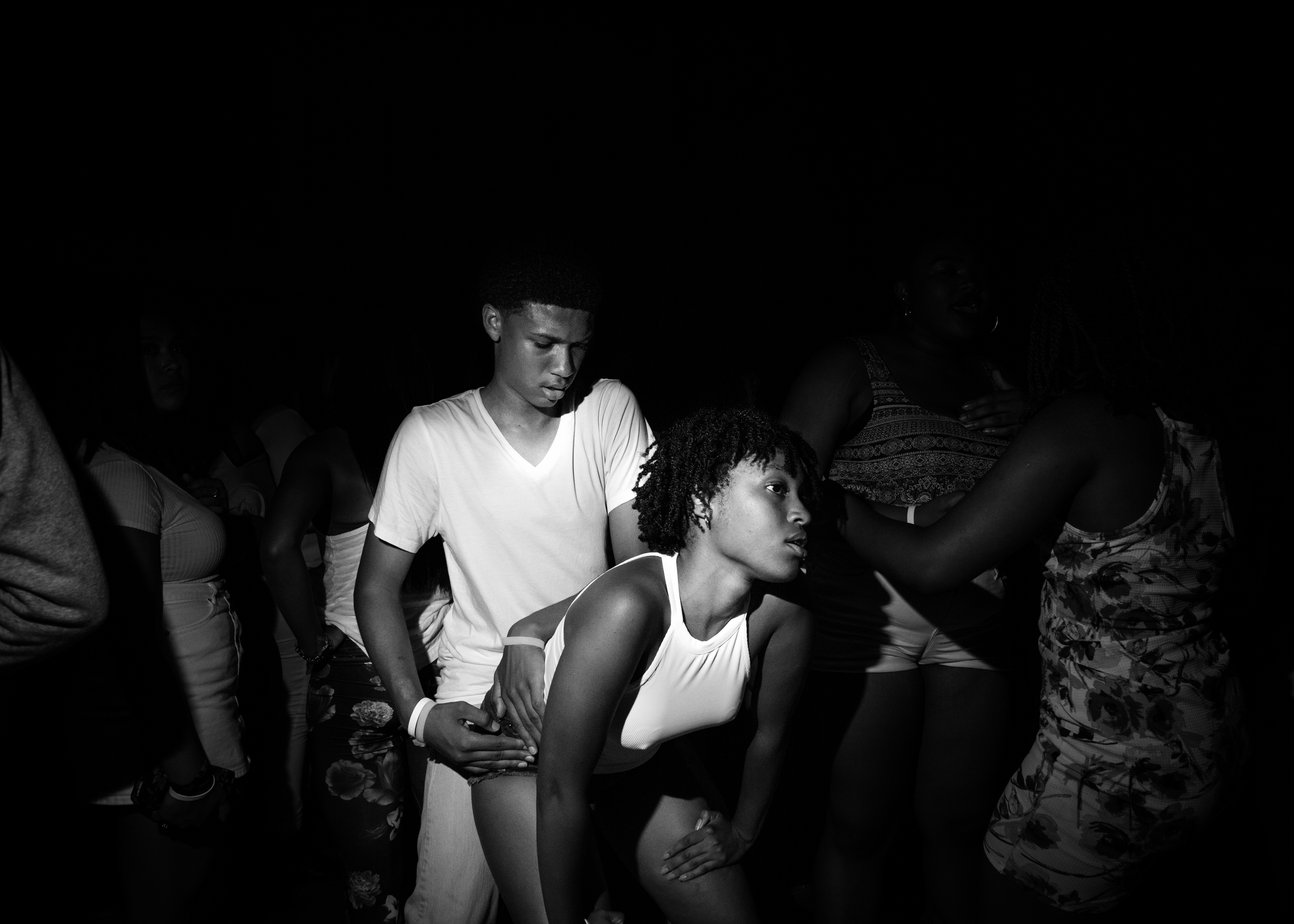
When I was a child, there wasn’t a high percentage of people from the Caribbean Diaspora in the South, so I often joked that I’m too Southern when I hear Trini or Afrobeats music because I don’t share that lived cultural experience. Compared to my Black friends who grew up on the coasts and connected to it at a young age, it’s one of the few times where I’m on the outside of the circle.
A subtext in my work is the multiplicity of Blackness and Black culture because we’re not a monolith. The music that you heard growing up, the way that you dance, the way that you move, are indigenous to your people culturally. There’s certain ways of moving your hips that depend on where you grew up—the way Trinidadians whine is different from how the people in New Orleans twerk. If you’re Black, of course you can dance on beat, but it breaks down in the rhythms you heard in your house growing up.
Often, I think about the cultural specificities that white people had to give up to become white. What are the little bits of humanity that they had to chip away to become a part of whiteness, especially recent immigrants? I think of the familiar bonds like the beat that connects Black people, the specific drum that connects Lebanese and Palestinian people across culture. When you become a white American, when you allow yourself to absolve into a certain type of white supremacist power, I think you have to lose this.
Whiteness is the dominant power structure of the Western world. What do you sacrifice to be the dominant? There’s power in whiteness being a monolith because it's a universally accepted societal norm. Yet, when they adorn with elements of Black culture, they’re rewarded with opportunities for their ability to mimic. That was the case when Sam Whiteout, a white member of Kappa Alpha Psi Fraternity, Incorporated, went viral in the mid 2010s. Afterward, he received panelist opportunities at MTV and life-long invites to the “cookout.”
I think there are important conversations to be had about whiteness and about one’s dance. I want to say, why are spaces so important? Why is the space necessary? Is it because of white supremacy? How did I know as a Black person at a PWI [predominantly white institution] that this space would exist without being seen. No one told me. It wasn’t like a Black person gave me a “Secret Meeting of the Negroes” card. Yet, I knew that there’s a bunch of Black undergrads here. I know for a fact that they’re going to be somewhere congregating and dancing. No one had to tell me that.
How do you talk about the conditions that provide for a space and celebrate it? The space that’s being created, but also the same conditions that forced spaces to be birthed in secret order and privacy. Outside of the mainstream, it’s something that I’m still trying to come to grips with because I would show these photographs to people on campus and they would ask, “Where was this?” I’d be like, “Oh, it was on campus on Friday.” It’s open to the public, but they don’t know that it exists.
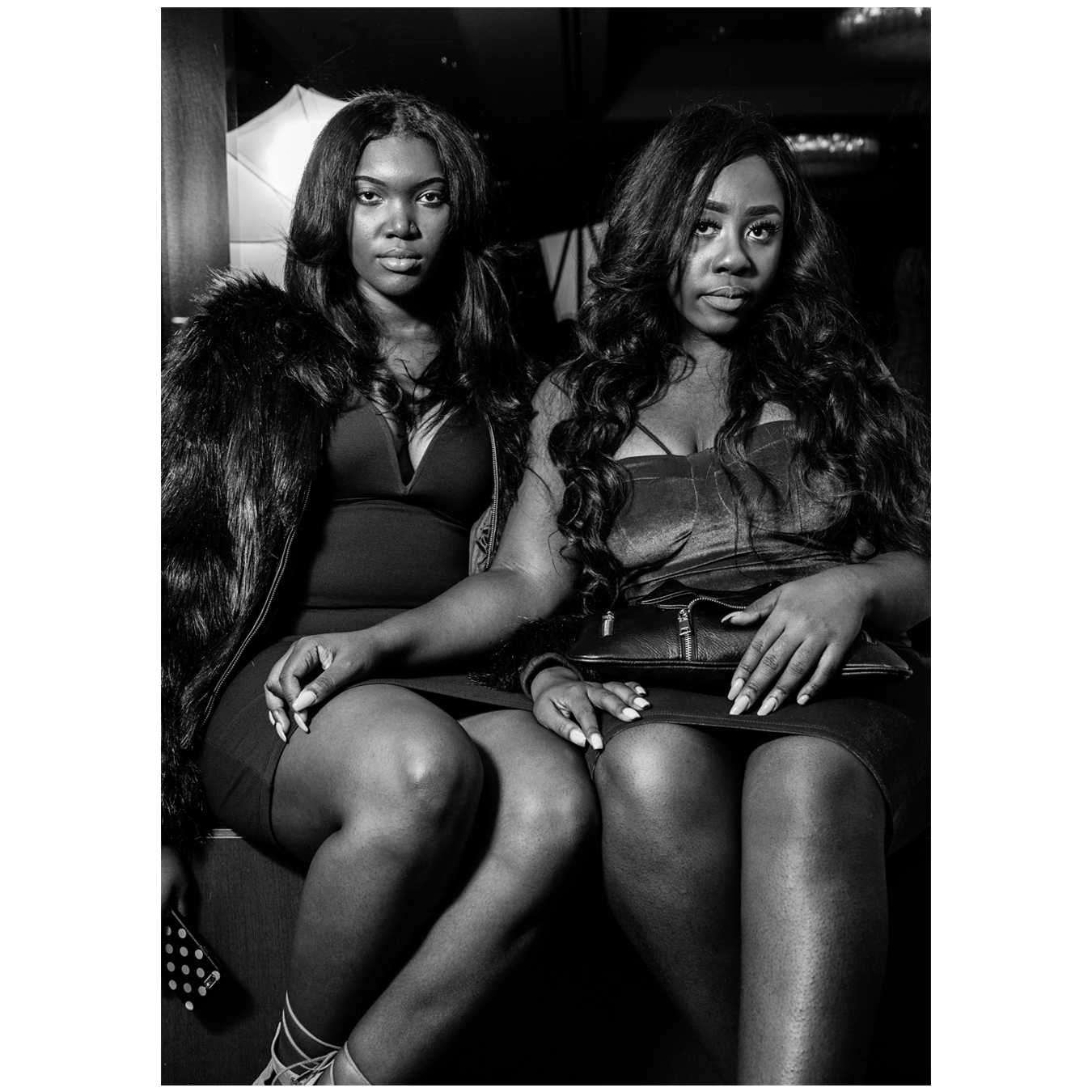
We’ve always had to create secret societies, like the ballroom, because we’re never allowed the humanity of being safe. Especially in Black LGBTQ spaces, where elders witnessed the elevation of the Paris Is Burning filmmaker’s career, but not their community. As physical evidence of their community migrated to the masses, elements of them were stripped and placed on white bodies, like Madonna’s Vogue. In contemporary culture, the “Leiomy Lolly” hair flip [created by trans, Afro-Puerto Rican ballroom dancer Leiomy Maldonado] has been adopted by Beyonce, Lady Gaga, and Britney Spears. The success of RuPaul’s Drag Race has served as an entry point for assimilation into pop culture, and continued cognitive dissonance between the originators and their cultural productions.
I struggle with trying to represent this in the world. I don’t necessarily want to say "represent," but how do you talk about all the spaces, all the different types of Blackness and give credit to it? There are gaps of knowledge that exist, these gaps of sight that exist where we exist, and that’s the nature of the Black experience.
Since moving to Chicago, I’ve begun to understand the ethnic category of African-American. Black people in Chicago, I think are extremely American in the sense that they’re descendants of enslaved Africans. Imprinted in their DNA is the genetic code of America. All of the major cultural events that happened to Black people in this country live within them.
I can’t help but think about the controversy on Black Twitter when somebody said “Chicago niggas is just Mississippi niggas in fur coats,” I died of laughter, because in terms of patterns from The Great Migration; they’re absolutely right. Later, I saw a video of Chicago “stepping” on the platform where a user said the dance originated in the South; where someone from Chicago replied, “Just because our grandmothers came from the South, doesn’t mean that everything is from there. We made stepping in Chicago. That’s our thing.” It reminded me of the pride associated with our ability to trace and lay claim to something. I think Black dance can get territorial because it’s part of a cultural identity. On Twitter, I’ve seen comparison threads of dances from the African Diaspora to those practiced in the states, and they’re eerily similar even though there was centuries of no-direct communication between each other.
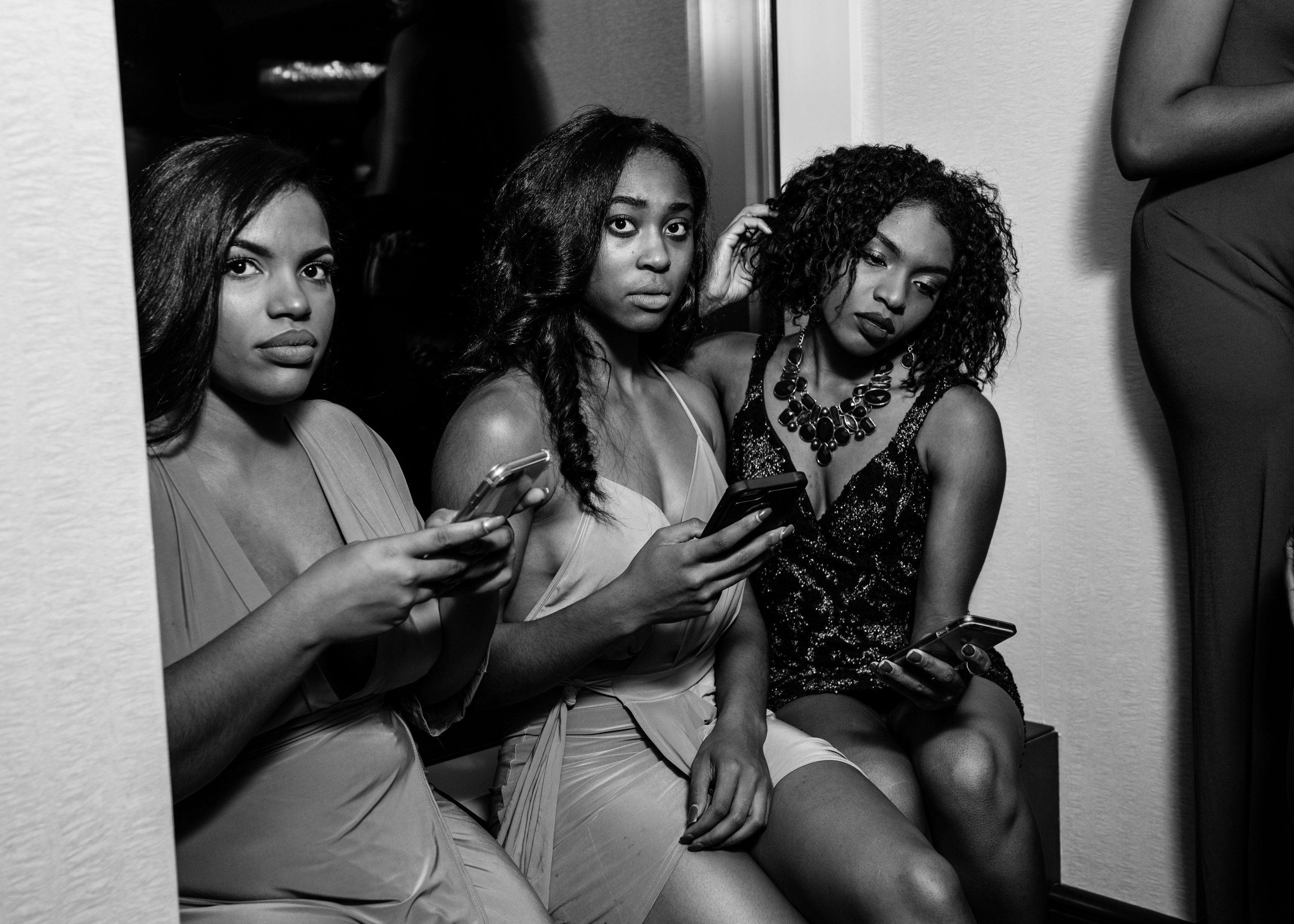
Black people always joke that twerking is something that we've been doing from the beginning of time, right. We've always done some type of hip movement whether it's whining in the Caribbean to twerking in the South, to bouncing in New Orleans to yike in the Bay, right? We've always created a dance circle. And you can get into the spiritual aspects of what it means for us to be in a circle or practice, whether it's Southern Baptist, but we've always created that circle and that protective layer because I believe in that one moment—I don't want to equate it to freedom—but I think that it's an intercommunal moment that we don't always get to experience and have.
I think there is this sacredness to a dance circle. There's a reason why we push people out. There's a reason why, at a young age, you had the Soul Train line at the family reunion. Because it's also, if we have to get on a very theoretical level, you're literally coming through an alter space in front of your loved ones and family members and it sounds like a coordination. You are participating. We have Black dances that are communal. You and I know how to do the Electric Slide. Even though we don't come from the same Black backgrounds, we've created universal songs and spaces, universal dances where all of us can participate and engage.
I want to go back to this point that you made about the circle and what it was. It's not freedom, but there's something that's happening there. I think what's happening there is a liberation of the body, of the physical body; and thinking about it in terms of that quote, a moment in which you enter a space and your body is no longer subject to the restrictions of labor or the restrictions of properness or the restrictions that are defined by the world in order for you to be an acceptable Black person in order for you to be accepted. So there's this liberation that happens. There's a release. The body is just... it's loose. I think that's the thing that we're talking about, and that's the thing that I think, in some ways, is the connection. It's the release.
There we go.
Rest in peace, Pop Smoke.
from VICE https://ift.tt/3dxDQik
via cheap web hosting
No comments:
Post a Comment